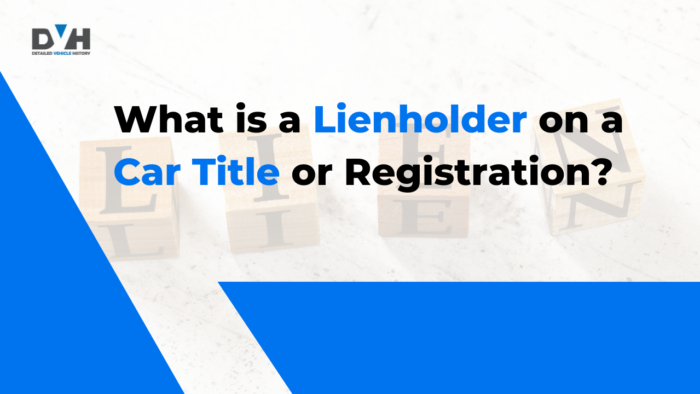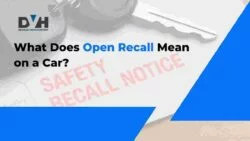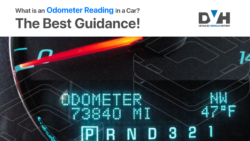A lot of car buyers often find themselves confused about the whole lienholder and lien situation in the used car market. If a car title has a lien, the lienholder has a legal claim to the car until the debt is fully paid. This can complicate ownership and transfer processes during a used car sale.
To avoid mistakes in the used car purchase process, this guide explains what liens and lienholders on a car title mean, their impact on car titles, and what to consider when buying a vehicle with an existing lien.
What is a Lienholder on a Car Title?
When you finance a car, the lender (often a bank, credit union, or sometimes a private individual) provides the loan to buy the vehicle. The lender then becomes the lienholder.
A lienholder is the entity that has a legal claim to the car until the loan is fully paid off. Essentially, the lienholder is listed on the car title and has the right to repossess the vehicle if the borrower fails to make payments.
What is a Lien on a Car?
A lien on a car is the legal right or interest a lender has in the vehicle until the associated debt is paid off. This lien acts as collateral for the loan, giving the lender security that they can recover the vehicle at any time if the borrower defaults on the loan.
Types of Liens
Car liens can come in different forms, but voluntary and involuntary liens are the two most common types.
Voluntary liens
Voluntary liens happen when a person borrows money or takes a loan willingly to purchase a vehicle. This allows the lender to claim or repossess the vehicle if you fail to pay. This arrangement protects the lender’s investment and gives the borrower the necessary funds to purchase the car.
Involuntary liens
Involuntary liens are placed on vehicles without the owner’s consent. They are usually placed due to unpaid obligations like taxes, mechanic’s service charges, or other debts. Similar to voluntary liens, they also need to be paid before a vehicle can be sold or ownership transferred.
READ ALSO: What Does an Exempt Mileage Title Mean for a Car?
The Impact of a Lien on a Car Title
Having a lien on a vehicle title only shows that the vehicle has a financial obligation tied to it, which also means you cannot transfer the title. It limits the rights of the car owner since they don’t have full ownership of the vehicle. Worse still, the vehicle can be repossessed at any time.
It is also more difficult to sell a vehicle with liens. You will have more hurdles to jump through since no one would like to inherit someone else’s debt. So, many buyers lose interest as soon as they are informed of the lien. If you want to sell your vehicle, then it is important that you clear all liens and loans and fully own the car.
What are the Responsibilities of a Lienholder?
As a lienholder, you need to handle certain tasks and make sure of them. The most important of these responsibilities are:
Payment Collection
Lienholders are responsible for collecting loan payments from borrowers. You don’t really need to do anything serious here; just make sure the right amount of money is collected monthly. You will also need to send monthly statements and reminders.
Based on the agreements you may have with the borrower, you may also have to charge late fees for missed payments.
Title Holding
Until the loan is fully paid, the car title will be with the lienholder. Your responsibility will be to ensure that the title is safely kept and accessible whenever needed. Keeping the title protects your legal interest in the vehicle and prevents the vehicle from being sold.
Car Insurance Requirements
As a lienholder, you are also responsible for asking borrowers to get insurance coverage. With car insurance, you’re sure your investment is protected.
You can request for comprehensive and collision coverage within their car insurance policy in order to ensure that the car is well covered if it gets damaged or stolen. .
You do not want to lose your money or your vehicle, so you have to perform those particular duties.
How to Remove a Lien from a Car Title
To remove the lienholder from a car title, you just need to take a few steps, including:
Paying Off the Loan
In order to remove a lien on your car, you have to pay off the lien in full. Once all the provided payments are made, the lienholder can be asked for a lien release.
Obtaining a Lien Release
A lien release document is a written document for the borrower signifying that they have cleared their debt, so there is no longer a hold on the car.
Updating the Title
After the lienholder has released the lien, the borrower gets legal rights over the vehicle, but that is not the last stage. They will have to change the title or get a new title from their DMV of residence in the case of a change of name, for instance.
This process includes providing the lien release documents to the DMV. They will also have to fill out the necessary forms and pay the fees to ensure the vehicle leaves with a clear title and is free from liens.
READ ALSO: How To Get a Salvage Title Check Report for Vehicles
Buying a Car with a Lien
Before purchasing a vehicle, it is important to check for existing liens alongside other hidden vehicle records and title brand records. You can check for liens through:
- Vehicle history reports: Title check tools are the easiest way to check past records of any used vehicle, including past lien and loan records. Try out Detailed Vehicle History’s VIN decoder and view title brand records for free in only a few minutes.
- State Department of Motor Vehicles (DMV): Another method to try is your state’s DMV. With the Vehicle Identification Number, they can provide information on the title and liens of the vehicle.
- Physical Title Review: You can also examine the vehicles’ title certificates. Liens are generally listed directly on the document, and you can find them if you take a close look.
If you find out the vehicle has a lien, but you’re still interested in purchasing it, you must ensure the lien is properly addressed before purchase. To avoid getting undisclosed liens, use our lien check tool.
Here’s what you need to do to ensure a smooth transaction:
- Communicate with the Seller: Discuss the lien with the seller or dealership and ensure they have a plan to pay it off. If there is no plan, you can suggest paying the lender directly to satisfy the loan balance. Then, you can pay the seller the remaining balance of the sales price. This ensures that the lien is settled and that you get the title of the vehicle.
- Get a Lien Release: Obtain a lien release once the loan is paid off to protect yourself from future claims.
If the seller refuses to clear the lien before selling, you may need to walk away from that purchase as you may be in the middle of a scam.
Conclusion
So, when you next see a vehicle with a lien on the car title, you should understand that the vehicle was financed during purchase, and there’s a lienholder in the picture. For car buyers, this could be a red flag as it may cause complications with ownership and title transfer, but it can be cleared easily.
Discuss with the seller to reach a common ground, and then you can purchase. If something doesn’t feel right, you may be in the middle of a scam and need to walk away. If you need to check the lien status of any vehicle, you can use our VIN decoder or visit the DMV.










